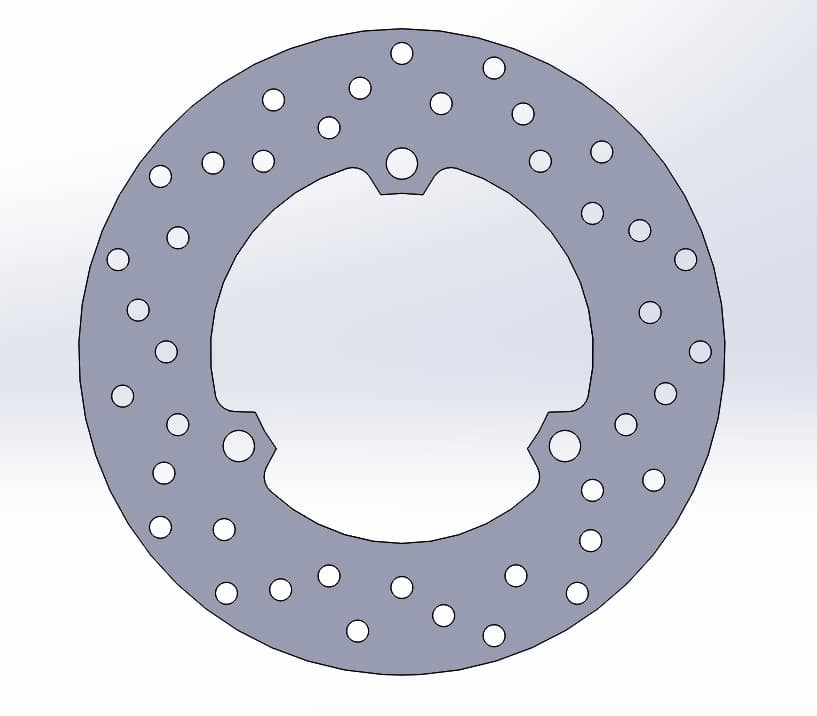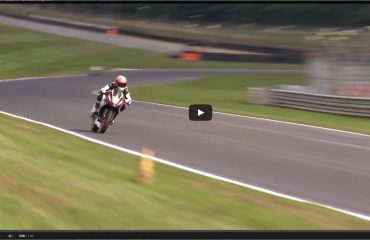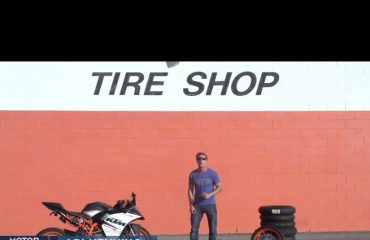Reducing weight on a race bike and the different types of weight

There’s a lot of importance placed on weight when talking about building a motorcycle for racing. I want to quickly distinguish between the 3 important types of weight, 3 types of mass to be more specific.
There’s rider mass, or sprung mass. This is the weight of the rider and the motorcycle and anything else that is suspended by the forks and shock on the motorcycle. The larger the mass, the harder it is for the motor accelerate it forward, and the harder it is for the brakes to stop it. With moving mass also comes momentum, and the more momentum the bike has, the harder it is to change direction, which means less corner speed and more lean angle to make the same turn. If the weight is higher up, it moves the center of gravity up, which also makes the bike require more work to turn (the rider, gas tank, and handle bars are typically the highest points that carry a lot of weight). This weight matters, but it’s actually the least important type of weight to focus on when building a race bike.
The second kind of mass is called unsprung mass. This is the weight of the parts of the motorcycle that are between the suspension and the road. This generally includes the tires, rims, wheel bearings, axles, swing arm, lower half of the forks and shock, brake rotors and calipers, rear sprocket, and part of the weight of the chain. This mass is different because even though it is low to the ground and doesn’t greatly effect the center of gravity, this is the mass that the suspension must move up and down quickly to keep the tire in contact with the road. The lower the mass, the faster the suspension can react, and the greater your traction will be. This mass is pretty important.
The third kind of mass is rotating mass. This includes tons of things on a motorcycle, cam shafts, gears, sprockets, transmission parts, wheels, tires, brakes, chain, sprockets, stator, etc. When mass rotates, it creates a gyroscopic effect. The larger the mass, the larger the gyroscopic effect. You may have noticed when you drive a motorcycle down the road, it has a strong tendency to continue going straight, even if you take a hand or 2 off the bars. Part of this is because of the rake/trail geometry, but most of it is because of the gyro effect of all the rotating mass. The heavier the particular mass that is rotating, and the diameter of the center of it’s mass, the larger the gyro effect. Ever take a hand or 2 off a bicycle handlebar? Much less mass, much less speed, much less gyro effect, it’s much easier to make the bicycle turn. If you’ve ridden a 1000cc bike and a 600cc bike you likely noticed how much easier it is to maneuver the 600cc bike. It feels MUCH lighter. Yet, if you look at the specs, the curb weight of most liter bikes and their 600cc counterparts are generally only marginally different. The reason the 600cc feels so much more nimble is because much of the reduced weight came from rotating parts such as the motor, transmission, brakes, chain, and wheels. This greatly reduces the gyro effect of the 600cc compared to the bigger bike, making it much more nimble, easier to turn, easier to change direction. You can carry much more corner speed with the same lean angle if the gyro effect is lower. Rotating mass also affects the friction and energy required to accelerate the rotation. It takes more energy to accelerate a larger mass at the same rate as it does to accelerate a smaller mass. Therefore, heavier rotating parts cause slower acceleration. Heavier rotating parts also create more friction during acceleration. The less rotating mass on a bike, the lower the loss to friction and the more horsepower that gets transferred to the ground. Rotating mass is VERY important.
Now, if you look carefully at these three categories, you will notice the most important factor of all…many of the parts on the motorcycle fall into BOTH the unsprung mass category AND the rotating mass category. Bingo!!! These are the most important items that will have the greatest effect on the handling and feel of a motorcycle on the race track. Now, tires seem to make the most sense, as they are heavy and large diameter, but I don’t recommend choosing your tires by weight. But wheels, brake rotors, and chain and sprockets as the first things you should consider upgrading to reduce the most important kind of weight on a race bike.
Wheels make a huge difference in the handling of a bike, which is why all professional superbike racers run the lightest weight wheels allowed, they have to in order to stay competitive. However, most production race classes require you to run the stock wheels. The next place to look for weight reduction is the chain and sprockets. The R3 comes stock with a 520 series chain and sprockets. Changing to a 415 series chain and sprocket reduces the life expectancy of the chain a little, but it drops 2.5 lbs from the drive train, unsprung, and rotating mass. This translates to about 2/3 extra horsepower being transferred to the rear wheel, faster acceleration, and better handling and corner speed. Since most racers barely use the rear brake, the rear brake rotor is the next lowest hanging fruit for unsprung, rotating mass. Some race organizations allow you to change the rear rotor, others only allow the stock rotor to be modified. To take care of this, I’ve designed a modified OEM rear brake rotor. Here’s a sketch of the OEM rotor which weighs 1 lb 13 oz:
And my modified OEM rotor which will weight less than half, about 14 oz (I’ll be machining these in the next couple weeks and will post pictures and the actual weight then):
About Norton Racing
1 Comment to “ Reducing weight on a race bike and the different types of weight”
You must be logged in to post a comment.





I got back into riding and bought an R3 in February. Then I found the R3-forums and your blog/company from there. I’ve really enjoyed your technical and competent blogging. Many of your articles, like the one above, remind me of my days racing “momentum” style race cars. It really is all about the mass! Keep up the great work!!!!